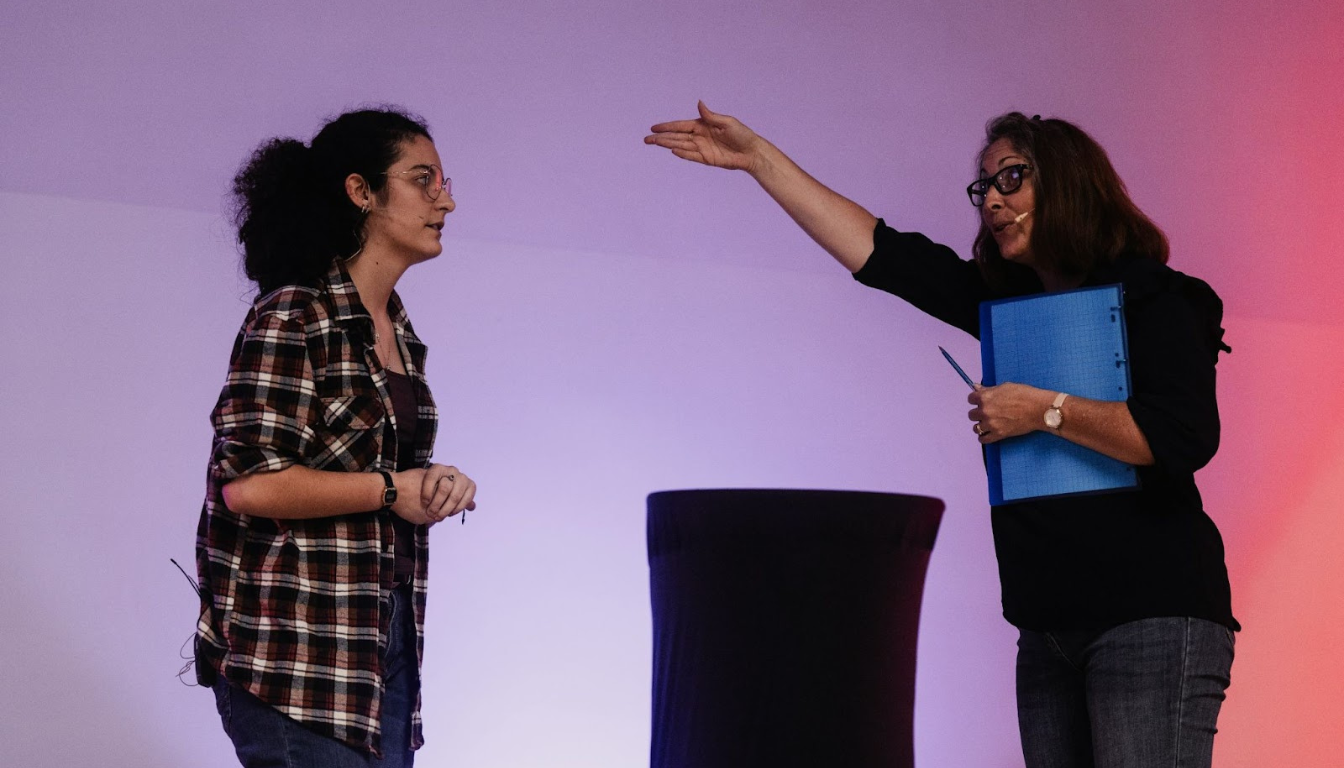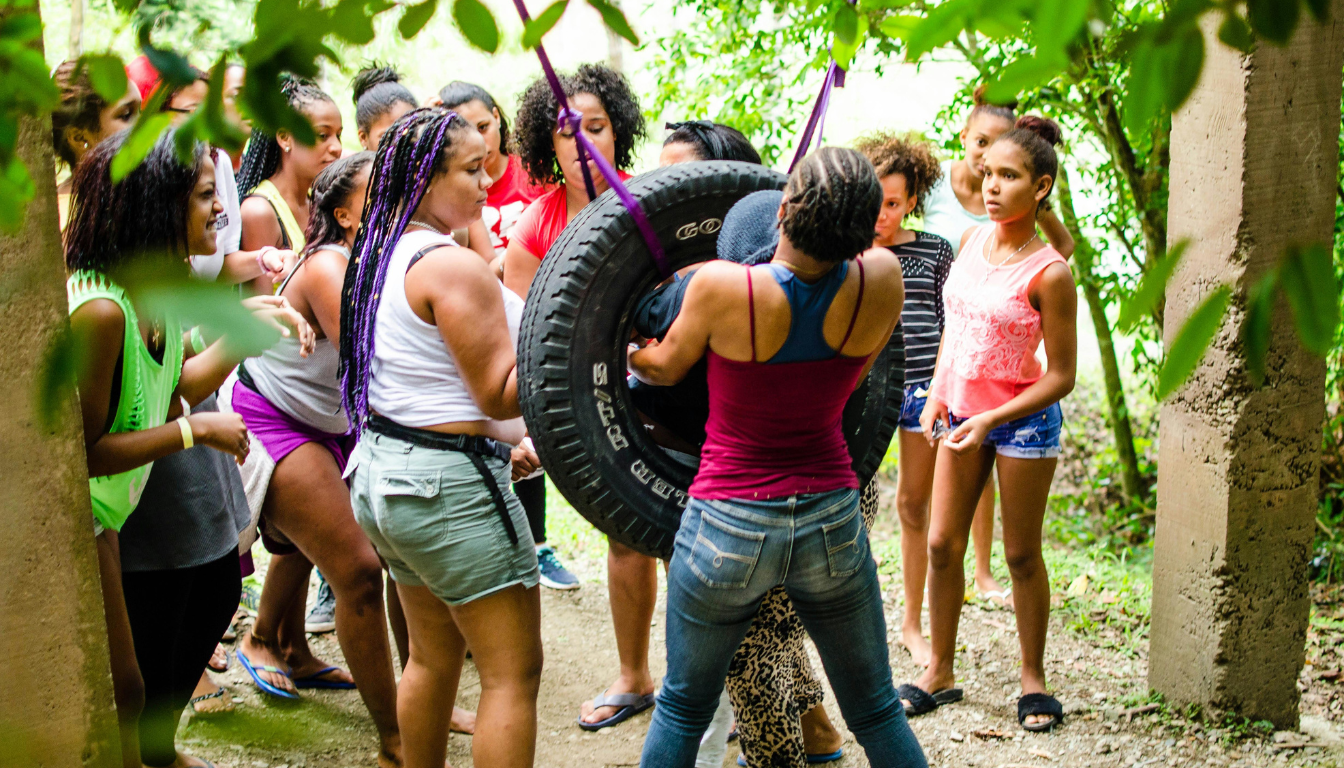Top 20 Communication Skills Games for Effective Team Building

Want to improve communication within your team? Check out these top 20 communication skills games. They are designed to boost clarity, teamwork, and understanding among team members. These activities will help you build stronger, more effective communication.
Key Takeaways
- Communication skills games enhance team dynamics, improve effectiveness and foster better understanding among team members.
- Activities like ‘Can You Hear Me?’ and ‘Back-to-Back Drawing’ focus on enhancing listening and verbal communication skills.
- Incorporating trust-building and empathy-focused activities into team-building can significantly improve team cohesion and overall communication.
Communication Skills Games to Enhance Team Dynamics

Imagine a team where every member communicates with clarity, listens actively, and collaborates seamlessly. Communication skills games are designed to turn this vision into reality. These games aim to enhance group dynamics, improve effectiveness, and create a better understanding among team members. Effective communication is crucial for reducing misunderstandings and fostering a productive workplace. These activities enable team members to give feedback, develop self-awareness, understand their impact on others, and foster better relationships.
A quiet environment is crucial for these activities, allowing participants to hear each other and interact effectively. From verbal exercises to non-verbal challenges, these games are crafted to teach communication skills in a fun and engaging way.
Here are some of the best communication games to help you and your team communicate more effectively and strengthen working relationships through improving communication skills and good communication.
Can You Hear Me?
The “Can You Hear Me?” game is a fantastic way to improve communication skills, particularly listening skills. In this fun activity:
- One participant describes an object abstractly.
- The other participant draws the object based on that description.
- The person whispering the instructions must be clear and precise.
- The person drawing must interpret the information accurately.
This game requires participants to be actively listening and engaged.
After the exercise, a debrief session helps discuss what worked well and what could be improved for future sessions.
Back-to-Back Drawing
“Back-to-Back Drawing” is another engaging game that focuses on verbal communication. One player describes an image while the other draws it, but neither can see what the other is doing. This game highlights the need for detailed communication and accurate listening.
Typically, players are not allowed to ask questions, which challenges them to convey information accurately without visual aids. This game is a great way to highlight how verbal clarity and interpretation can impact communication.
Taboo Challenge
The “Taboo Challenge” is a fun communication game where players must describe a phrase without using specific banned words. This obstacle course of words forces players to think creatively and use precise language to convey their ideas. The game encourages effective communication and quick thinking, as players must navigate around the “taboo” words to get their message across.
This lively and interactive game emphasizes verbal communication skills and conversation skills.
Nonverbal Communication Games

Nonverbal communication is just as important as verbal communication. It involves body language, facial expressions, and other nonverbal cues that can convey a wealth of information. Nonverbal communication games enhance self-awareness and develop skills beyond traditional verbal methods. Engaging in these activities helps participants enhance their ability to convey ideas non-verbally, often utilizing body language and facial expressions. This can be particularly useful in environments where clear communication is essential but verbal instructions are not possible.
From silent improv games to lip-reading challenges, these activities focus on enhancing participants’ ability to interpret and express nonverbal messages. Incorporating these games into team building activities can significantly improve team communication and overall effectiveness.
Let’s delve into some of the best nonverbal communication games that can help your team communicate more effectively.
Silent Line-Up
The “Silent Line-Up” game is an excellent exercise for developing nonverbal communication skills. In this game, players must organize themselves by specific criteria without speaking, relying solely on gestures and other nonverbal cues. This activity enhances teamwork and improves players’ ability to interpret nonverbal messages.
Participants learn to give and receive clear instructions without relying on verbal cues.
Mirror Movements
“Mirror Movements” is a game that emphasizes synchronization and nonverbal communication skills. The objective is for partners to mimic each other’s movements as closely as possible, enhancing their ability to observe and replicate nonverbal cues.
This game improves nonverbal communication and fosters a deeper connection between participants working towards perfect synchronization.
Charades
Charades is a classic game that encourages unconventional communication and attention to body language. In this fun activity, players act out words while others guess the phrase. It’s a great communication exercise that emphasizes creative thinking and the importance of nonverbal cues.
The game continues to be a popular choice for team building activities due to its engaging and interactive nature.
Listening Skills Activities

Active listening is a cornerstone of effective communication. It involves not just hearing but understanding and responding to what is being said. Listening skills activities:
- Enhance interpersonal relationships and teamwork
- Foster interactivity and increase engagement during team challenges
- Strengthen individual capabilities and overall team dynamics
Listening skills activities are designed to help participants practice and improve their ability to focus on both verbal and nonverbal communication. Incorporating these activities into your team’s routine ensures that every member is better equipped to understand and respond to colleagues.
Let’s explore some effective fun listening skills activities.
Active Listening Exercise
The “Active Listening Exercise” is designed to improve workplace communication by enhancing listening skills. Participants take on roles of speaker, listener, and observer to practice listening skills in a structured setting.
This great communication exercise allows participants to practice listening actively and provides a platform for feedback and improvement.
Echo Game
The “Echo Game” focuses on enhancing listening and tone recognition. This fun communication game involves players repeating phrases with varied intonations, helping them to understand and interpret different tones and pitches.
This classic game remains a valuable tool for improving listening skills.
Telephone Whisper
“Telephone Whisper,” also known as “Broken Telephone,” is a game that emphasizes clear communication. In this activity, players whisper a phrase to the next player until the last player reveals the final message. The game demonstrates how messages can become distorted, highlighting the importance of clear and precise communication.
Players compare the final message with the original phrase to see how closely they match using a post it note.
Creative Communication Games

Creative communication games are designed to enhance participants’ ability to think innovatively while solving problems through interactive play. These games foster the exchange of ideas and problem-solving through engaging group activities. Incorporating these games into team building activities can significantly improve team communication and overall effectiveness.
These fun games encourage participants to think outside the box and develop new ideas, from storytelling to visual communication. They are particularly useful in environments that require creative thinking and problem-solving.
Here are some of the best creative communication games to help your team’s communication more effectively.
Story Relay
The “Story Relay” game encourages creativity and teamwork by requiring participants to collaboratively build a narrative, with each person contributing one sentence. This game enhances storytelling skills, sequencing, and logical progression while fostering team collaboration.
It’s a great way to get other team members engaged and thinking creatively.
Emoji Storytelling
“Emoji Storytelling” is a game that enhances visual communication and creative thinking. Participants use emojis to tell a story, relying on visual symbols to convey their message. This activity effectively highlights the importance of nonverbal communication and creative expression.
Shuffled Storyboards
“Shuffled Storyboards” is an activity where teams work together to arrange random images into a logical sequence, promoting effective communication and collaborative effort. This game encourages teams to think critically and communicate clearly to create a coherent story from the shuffled images.
Trust-Building Communication Exercises

Trust is the foundation of any successful team. Trust-building communication exercises foster cohesion and trust among team members. Participants can practice behaviors and improve communication skills through these engaging activities. Feedback exercises are crucial for building trust and encouraging openness within a team.
From navigating obstacle courses to untangling human knots, these exercises emphasize the importance of clear communication and trust among team members. Incorporating these activities into team building can significantly improve team dynamics and overall effectiveness.
Here are some of the best trust-building communication exercises.
Blindfold Stroll
The “Blindfold Stroll” game involves one partner and the other partner navigating an obstacle course while blindfolded, relying solely on their partner’s precise verbal instructions. This activity emphasizes the importance of clear communication and attention to detail.
It’s a great way to build trust and improve verbal instruction skills.
Human Knot
The “Human Knot” activity promotes teamwork by requiring participants to communicate effectively to untangle themselves while holding hands. This game, which our team presents, highlights the importance of clear communication and collaboration in achieving a common goal.
Marshmallow Tower
The “Marshmallow Tower” challenge encourages teams to strategize under pressure, highlighting the importance of collaboration and clear communication. This game is an excellent way to build trust and improve teamwork.
Digital Communication Skills Games
In today’s digital age, digital communication skills are essential for decentralized teams and remote work. These games are designed to enhance communication skills in virtual settings, making them ideal for teams that work remotely. These games foster collaboration, creativity, and problem-solving in a virtual environment.
From virtual drawing games to online escape rooms, these activities encourage participants to communicate effectively and work together to solve problems. Incorporating these games into team building can significantly improve team communication and overall effectiveness.
Here are some of the best digital communication skills games.
Online Pictionary
“Online Pictionary” is a virtual drawing and guessing game that enhances quick thinking and non-verbal communication skills. In this classic game, one participant draws an object or concept while others guess what it is.
Online Pictionary encourages creativity and provides a fun way to improve digital communication skills. This game can be easily integrated into virtual team-building activities.
Virtual Escape Room
“Virtual Escape Rooms” are engaging activities where remote teams solve puzzles together in a virtual setting. These games develop collaboration, digital communication skills, and logical reasoning. Participants must communicate effectively and work together to solve challenges, making virtual escape rooms an excellent choice for team building activities.
The immersive nature of virtual escape rooms makes them a fun and interactive way to enhance team dynamics.
Video Call Charades
“Video Call Charades” involves acting out prompts via video call for others to guess. This game enhances non-verbal communication skills and makes virtual connections more engaging.
This classic game, adapted for the digital age, provides an excellent way to improve team communication in a virtual environment. This activity can be easily incorporated into remote team-building sessions to foster better communication and teamwork.
Empathy and Understanding Activities
Empathy and understanding are crucial components of effective communication. Activities promoting empathy can significantly enhance emotional intelligence among team members. These activities encourage participants to share personal stories and practice active listening, fostering deeper connections and mutual respect. Improved listening skills involve being present, understanding, and empathizing with others.
Incorporating empathy and understanding activities into team building helps teams develop stronger bonds and improve overall communication. Here are some activities designed to foster empathy and understanding among team members.
Role Reversal
“Role Reversal” in team activities encourages individuals to step into each other’s shoes, fostering empathy and better understanding of different perspectives. This activity can involve various scenarios, such as the “Blindfold Stroll” game, where one partner navigates an obstacle course blindfolded, relying on their partner’s verbal instructions.
This exercise underscores the importance of trust and communication, making it a powerful tool for fostering trust and empathy.
Appreciative Interviews
“Appreciative Interviews” involve participants sharing stories of challenges and successes, and interviewing each other to explore previous successes and identify positive solutions. This activity promotes active listening, empathy, and openness within a team.
Completed in under an hour, it efficiently improves communication skills and fosters a positive team environment.
What, So What, Now What?
The “What, So What, Now What?” exercise consists of analyzing what happened, why it matters, and how to proceed. This reflective framework encourages teams to analyze experiences, fostering better communication and future collaboration strategies.
Understanding the importance of past events helps teams connect on a deeper level and improve overall effectiveness.
Assertive Communication Games
Assertive communication is about expressing oneself clearly and respectfully. Assertive communication games develop workplace awareness and distinguish intentions from outcomes. These games encourage learning essential communication concepts and building core communication skills. Assertive communicators are respectful, clear about their needs, and considerate of others.
Team members can learn to express their points clearly and confidently through assertive communication games. Here are some activities designed to develop assertive communication skills.
Persuasion Challenge
The “Persuasion Challenge” helps develop persuasive speaking, reasoning, and confidence in expressing opinions. Players engage in a time-constrained environment, having only 30 seconds to make their argument. This exercise invites players to engage in short, compelling arguments to persuade others, enhancing assertive communication skills.
Yes and Picnic
“Yes and Picnic” is an activity that shows how different communication styles impact conversations. Participants plan an imaginary event and have four conversations, each demonstrating a different communication style:
- Conversation 1
- Conversation 2
- Conversation 3
- Conversation 4
This activity highlights the significance of varied communications approaches in a group setting small groups communication activity group discussion planning, making it a valuable tool for teaching these skills.
Grounded Assertiveness Role Play
“Grounded Assertiveness Role Play” is a quick and easy game that helps participants explore the effects of tone and body language in assertive interactions. The goal is to reflect on tone, energy, and body language while practicing assertive communication.
This exercise involves role-playing scenarios with different communication styles, enhancing self-confidence, assertiveness, and communication skill.
Summary
Communication skills games are invaluable tools for enhancing team dynamics and fostering a culture of clear, effective communication. From verbal and nonverbal communication games to activities that build trust and empathy, these exercises offer a variety of ways to improve team communication. By incorporating these games into your team’s routine, you can create a more cohesive, collaborative, and innovative team environment. Remember, the key to successful communication lies in continuous practice and a willingness to understand and adapt to others’ communication styles. For organizations seeking structured and engaging team-building experiences, platforms like Offsite offer curated activities designed to enhance communication and collaboration among team members. These resources can be instrumental in facilitating effective team development initiatives. Start using these games today, and watch your team’s communication skills flourish.
FAQs
- What are the benefits of communication skills games?
Communication skills games improve team clarity, collaboration, and trust while allowing participants to practice and enhance their communication abilities in an engaging manner. Ultimately, these games foster a more effective and cohesive team environment.
- How can nonverbal communication games improve team dynamics?
Nonverbal communication games enhance team dynamics by fostering self-awareness and improving communication skills beyond verbal methods. This encourages participants to effectively convey ideas through body language and facial expressions, promoting a deeper understanding among team members.
- What is the purpose of listening skills activities?
The purpose of listening skills activities is to improve participants' ability to focus on both verbal and nonverbal communication, thereby enhancing interpersonal relationships and fostering effective teamwork.
- How do empathy and understanding activities benefit teams?
Empathy and understanding activities enhance emotional intelligence and improve team dynamics by fostering deeper connections and mutual respect among team members. This ultimately leads to a more cohesive and effective team.
You may also like
Unique spaces for your next offsite
Find distinctive venues for your upcoming corporate retreat.
Stay Updated with Our Insights
Get exclusive content and valuable updates directly to you.







